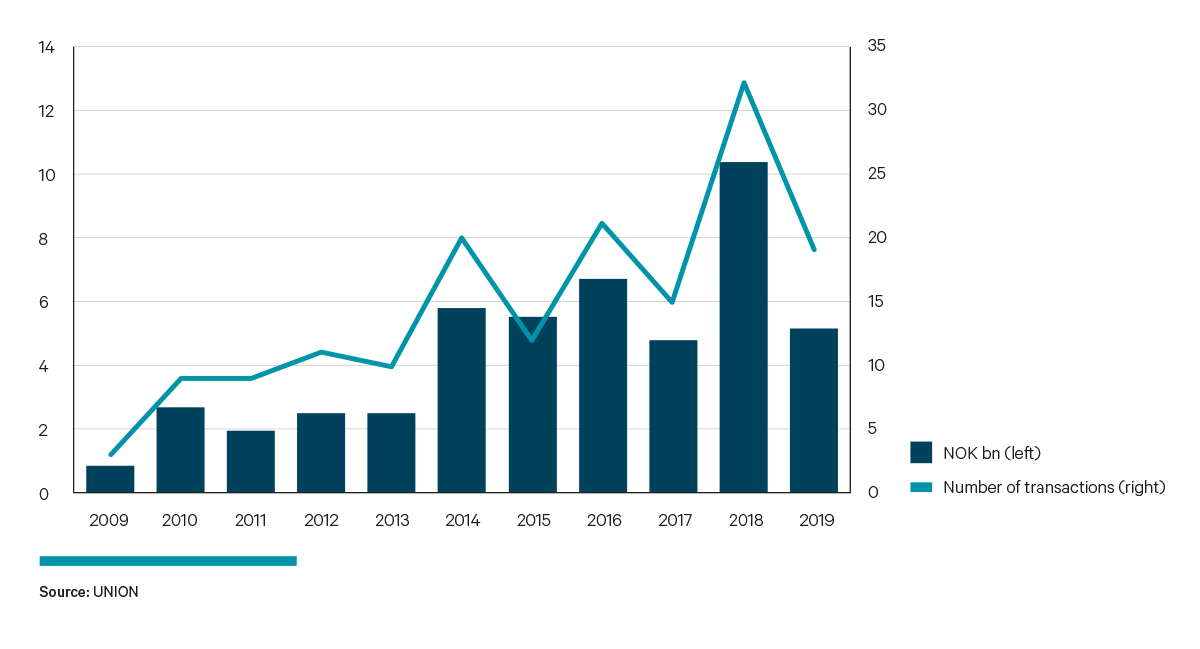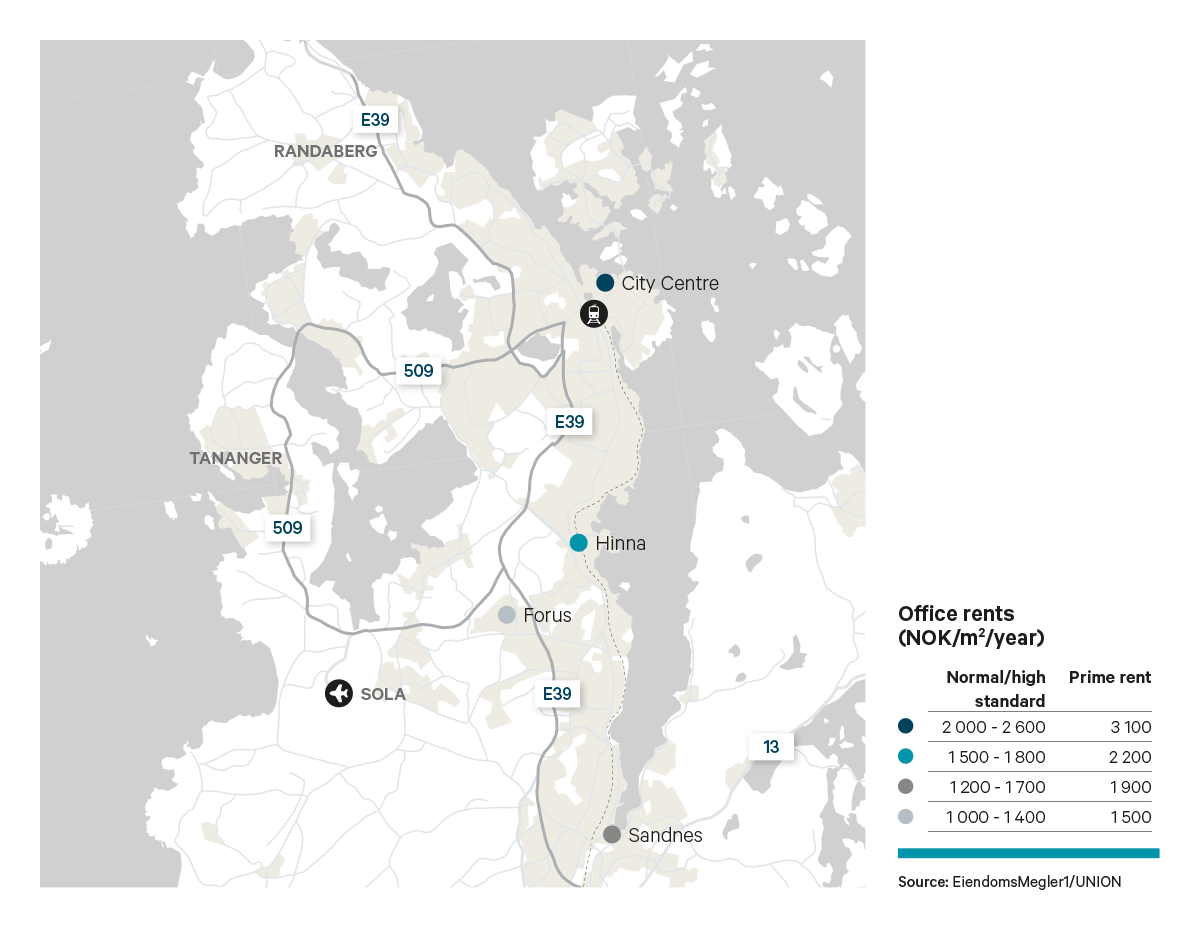Great breadth in the transaction market
The 2019 transaction volume in Stavanger was lower than in the two preceding years. While 2018 ended as the most active 12 months ever for transactions in the city, the volume was halved last year. We have registered 19 with a combined volume of about NOK 5.1 billion.
Transaction Market
This reduction primarily reflects the absence of the very largest transactions. Unlike the five preceding years, we observed none exceeding NOK 1 billion in 2019. Several large properties nevertheless changed hands. These included Niam’s purchase of the Wintershall head office at Hinna, while a club deal arranged by NRP acquired Jærhagen shopping centre from Coop Klepp and Dolphin Eiendom. Several city-centre properties were also sold during the year.
The market displays a persistent optimism. Big variations still exist between objects changing hands, and all risk classes are represented. The time when only low-risk properties were bought is definitely past, since several value-added properties changed hands last year. We now estimate that the best office properties in central Stavanger could achieve a yield of 4.50 per cent. That is down by 10 bps from our previous evaluation.
Rental market
Business developments in Rogaland country have been strongly affected by the petroleum sector, and the oil price slump in 2014-15 increased unemployment in the region. The position today has noticeably improved, and Rogaland has seen a continuous growth in employment over the past three years. Office jobs increased by about 3.5 per cent in 2019 and now exceed the previous peak in 2014.
SR-Bank’s business trends survey for January 2020 indicates that the party is still not over. Fifty-eight per cent of companies signalled that they expect continued growth in 2020, with petroleum-related and export firms remaining the most optimistic. Enterprises in the oil and gas sector expect a high level of activity on the Norwegian continental shelf over the coming 12 months. For their part, exporters are benefitting from the weak krone exchange rate.
The positive business trend has increased demand for space in the region. Office vacancy topped out in 2017 at 13.5 per cent, and has been below 12 per cent since then. However, that means returning to the pre-slump level remains a long way off – office vacancy for the region in 2012 was only 3.4 per cent.
According to EiendomsMegler1, office vacancy was 11.3 per cent in November 2019 – up by 0.3 percentage points from the previous spring. Much of the increase has occurred in central Stavanger, where vacancy is up by 6.8 percentage points to 17.6 per cent. The big jump reflects newbuilding and relocations within the area. Given the relatively small building inventory, downtown vacancy is sensitive to such changes.
Vacancy has moved in the same direction at Forus, but more moderately. A clear division exists internally in this district, with newer buildings maintaining much lower vacancy than older ones.
A large proportion of the vacant space in the region relates to older, outdated buildings which fail to satisfy the standards expected by many tenants in today’s market. Demand and the willingness to pay are both high where modern, efficient premises in an attractive location are concerned. We have observed rent levels of more than NOK 3 000 per m² in the most sought-after buildings.



